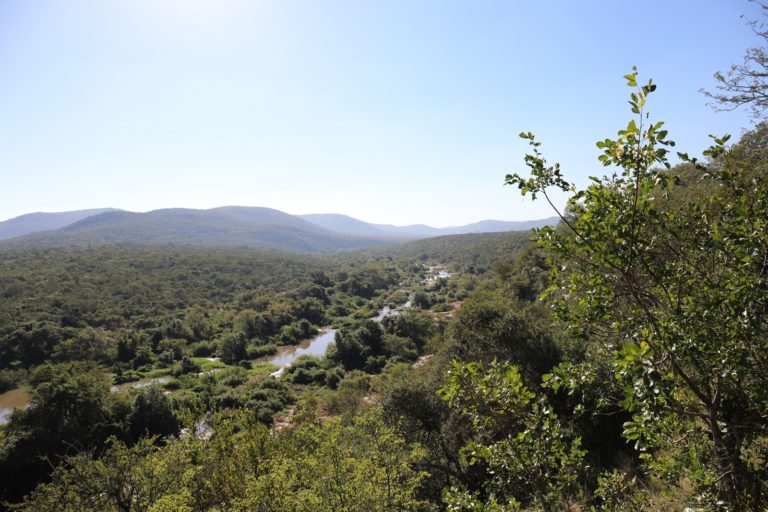UNESCO’s Man and the Biosphere (MAB) programme added 18 new sites in 12 countries to the World Network of Biosphere Reserves, which is now made up of 701 biosphere reserves in 124 countries around the world.
The Kingdom of Eswatini (formerly Swaziland) joins the MAB Network this year with the inscription of its first Biosphere Reserve, Lubombo.

Image: UNESCO / Lubombo Biosphere Reserve – Kingdom of Eswatini
The 294,020 hectare site in the Lubombo Mountain Range, which straddles Mozambique and South Africa, is part of the Maputoland-Phondoland-Albany Biodiversity Hotspot and consists of forest, wetland and savannah ecosystems.
Local flora species include the Lubombo Ironwoods (Androstachys jonsonii), Lubombo Cycads (Encephalartos lebomboensis), the recently discovered Barleria species (Barleria lubombensis) and the Jilobi forest.
Twenty of the 88 mammals identified in the area are only found in the Lumomba region.
Notable among these mammals are the White Rhinoceros (Ceratotherium simum), Cape Buffalo (Syncerus caffer), Roan Antelope (Hippotragus equines), Tsessebe (Damaliscus lunatus) and the Suni (Nesotragus moschatus zuluensis), as well as threatened species such as the Leopard (Panthera pardus).
The biosphere reserve is home to numerous conservation and monitoring projects, as well as commercial enterprises, industry, agriculture, animal husbandry, and forestry.

Image: UNESCO / Lubombo Biosphere Reserve – Kingdom of Eswatini
UNESCO Director-General Audrey Azoulay said, ‘There is a pressing need to take action for biodiversity, for our shared environmental heritage. After diagnosing the issue at stake, highlighted by the recent report of the Intergovernmental Science-Policy Platform on Biodiversity and Ecosystem Services (IPBES), the vitality of the World Network of Biosphere Reserves gives us cause for hope.
‘Each UNESCO biosphere reserve is an open sky laboratory for sustainable development, for concrete and lasting solutions, for innovation and good practices. They seal a new alliance between the world of science and youth, between humans and the environment.’
UNESCO Biosphere reserves seek to reconcile human activity with the conservation of biodiversity through the sustainable use of natural resources.
This reflects UNESCO’s key objective of fostering innovative sustainable development practices and combatting the loss of biodiversity by accompanying communities and Member States in their work to understand, appreciate and safeguard the living environment of our planet.
New reserves are designated every year by the International Co-ordinating Council for the programme, a body with a rotating elected membership of 34 UNESCO Member States.
Established by UNESCO in the early 1970s, the Man and the Biosphere Programme is an intergovernmental scientific programme that aims to improve relations between people and their natural environment. It is a pioneering initiative at the origin of the very notion of sustainable development.
The remaining 17 new sites include:
– Lower Mura Valley Biosphere Reserve (Austria)
-Saleh-Moyo-Tambora “SAMOTA” Biosphere Reserve (Indonesia)
-Togean Tojo Una-Una Biosphere Reserve (Indonesia)
– Po Grande Biosphere Reserve (Italy)
– Julian Alps Biosphere Reserve (Italy)
– Kobushi Biosphere Reserve (Japan)
– Gangwon Eco-Peace Biosphere Reserve (Republic of Korea)
– Yeoncheon Imjin River Biosphere Reserve (Republic of Korea)
– Nordhordland Biosphere Reserve (Norway)
– Roztocze Biosphere Reserve (Poland)
– Lake Elton Biosphere Reserve (Russian Federation)
– Alto Turia Biosphere Reserve (Spain)
– La Siberia Biosphere Reserve (Spain)
– Valle del Cabriel Biosphere Reserve (Spain)
– Vindelälven-Juhtatdahka Biosphere Reserve (Sweden)
– Voxnadalen Biosphere Reserve (Sweden)
– Isle of Wight Biosphere Reserve (United Kingdom)
Image source: UNESCO
You may also like
Related Posts
China’s National Health Commission has published a list of controversial coronavirus treatments that have animal...
read more
Warmer sea temperatures in the summer months, especially in February, were recorded and are believed...
read more
The latest report indexing the world's happiest countries has highlighted the important role of...
read more